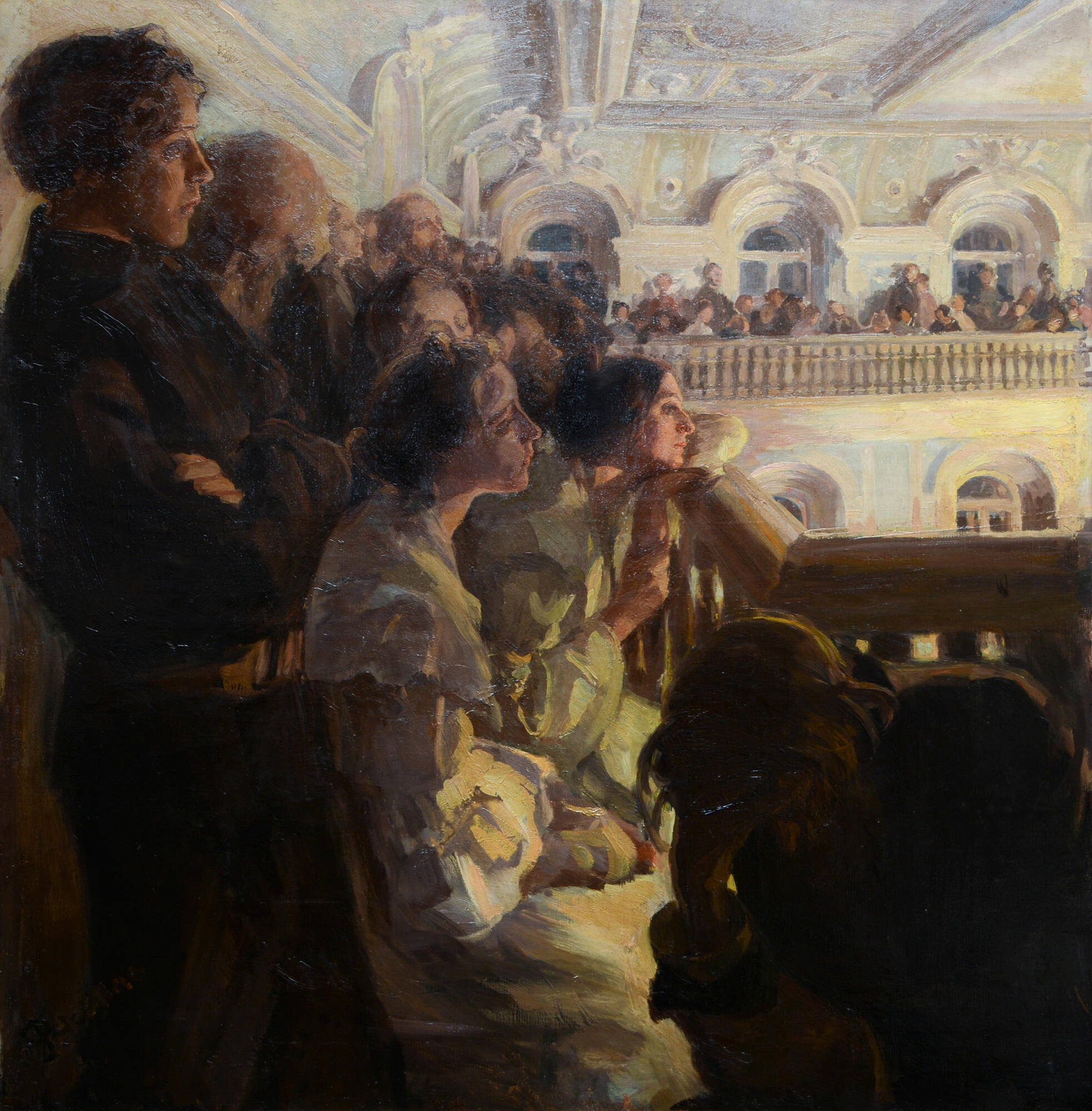Antonina Leonardovna Rzhevskaya painted “Music” in 1902–1903, shortly before the First Russian Revolution. She managed to convey the uplift experienced by Russian society in the early 20thcentury.
Antonina Rzhevskaya, née Popova, was born into an impoverished noble family. After the death of her father, she moved to Tver along with her family. In 1880, she came to Moscow where she attended classes at the School of Painting, Sculpture and Architecture as a non-matriculated student. After graduation, the young artist began exhibiting her works actively and soon earned recognition. Initially, she did not sign her paintings, fearing gender bias, as painting was still considered a predominantly male occupation. However, after Pavel Mikhailovich Tretyakov bought her painting “A Merry Minute” at the 25thTraveling Art Exhibition in 1897, and another work “Twilight” garnered praise from experts at the 27thTraveling Art Exhibition in 1899, Antonina Rzhevskaya was accepted into the Society of Traveling Art Exhibitions.
In this painting, Antonina Rzhevskaya managed to achieve a unique musical quality, “The sounds of music have been transformed into paints, crafting a beautiful inaudible melody.” The artist depicted the balcony of the auditorium nowadays known as the Rachmaninov Concert Hall of the Moscow Conservatory. Since only poor people bought balcony tickets, this shows that the painter stayed true to the democratic tendencies of the Wanderers.
The painting’s dynamic diagonal composition, free and
broad brush strokes, use of chiaroscuro, sharp contrasts between the dark
silhouettes of the foreground and the golden warm light flowing from the center
of the painting are used to convey the dramatic atmosphere of that time. The free
brush stroke indicates that the artist was looking for new means of artistic expression,
similar to the searches of the Union of Russian Artists and Impressionists,
characteristic of early-20th-century Russian art. After the
exhibition, the painting was acquired by Ivan Petrovich Sveshnikov, a patron of
the arts and collector from Pereslavl-Zalessky. His collection was later bequeathed
to the Rumyantsev Museum in Moscow. After the Revolution of 1917, its paintings
were transferred to the State Museum Fund and distributed to various museums
across the country. This is how “Music” by Antonina Rzhevskaya ended up in Nizhny
Tagil.




